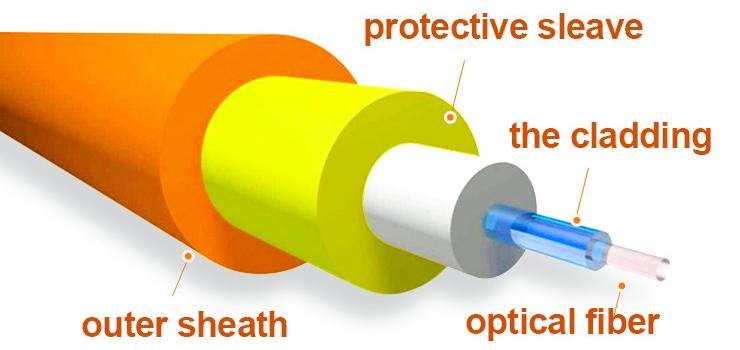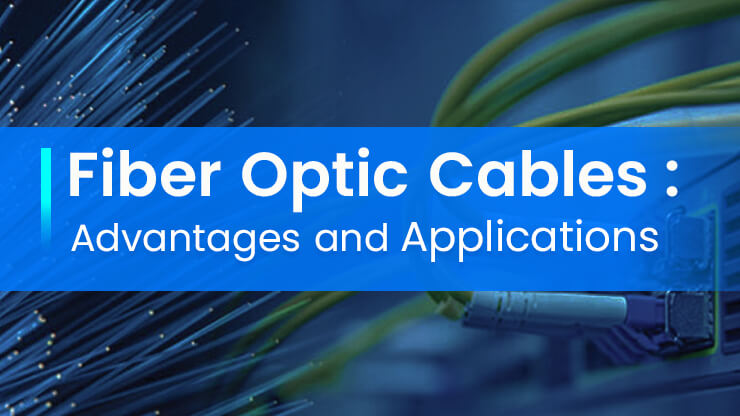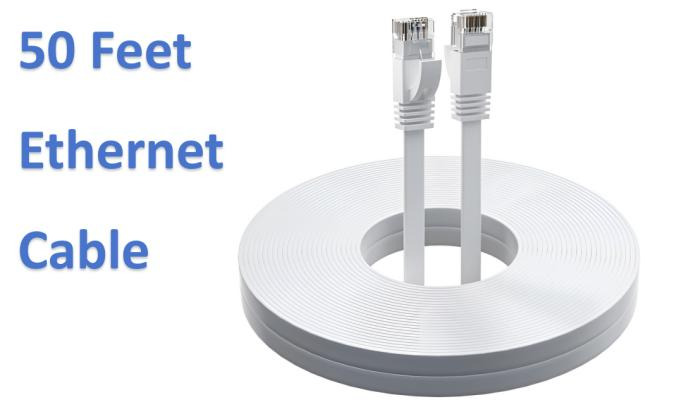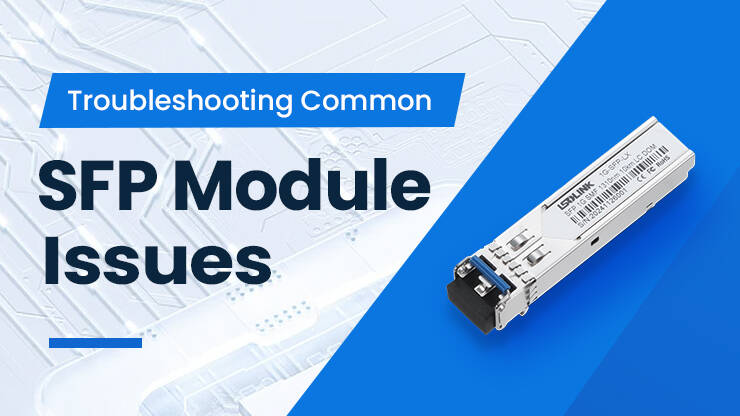Exploring Fiber Optic Cables: Advantages and Applications
What Is an Optical Fiber Patch Cord?
Fiber optic patch cords are made of bundles of optical fibers and transmit information in the form of light pulses. Light enters the patch cord from one end, passes through the high refractive index core, and is emitted on the low refractive index cladding.

The structure of the optical fiber patch cord
The optical fiber patch cord is composed of several parts. The core component is the optical fiber, which is used to transmit optical signals. Around the core is the cladding. The cladding reflects the light back to the core, preventing signal loss and enabling the light to be transmitted over long distances. Surrounding the cladding are the protective sleeve and the outer sheath, which protect the optical fiber from damage and interference.

Types of optical fiber patch cords
Optical fibers can be mainly classified into two types: single-mode fibers and multi-mode fibers. Single-mode fibers have a smaller core diameter and are suitable for long-distance transmission. Multi-mode fibers have a larger core diameter and are suitable for short-distance transmission.

What Are the Advantages of Optical Fiber Patch Cords?
Unlike traditional optical fiber and copper cables, optical fiber patch cords offer higher bandwidth, enabling the transmission of more data. Moreover, in terms of transmission speed, optical fiber patch cords are faster. Optical fiber patch cords have better performance than copper cables, being more stable and less susceptible to external interference. They can transmit data over longer distances without losing signals, are safer, and do not emit signals that can be intercepted.
Detailed description:
In terms of transmission distance: Due to the low signal power loss rate of optical fiber patch cords, optical fiber patch cords can transmit optical signals over a longer distance than older types of patch cords. Through an ideal network setup and material combination, some optical fibers can effectively transmit signals over hundreds of kilometers.
In terms of transmission speed: Fiber optic patch cords have a greater advantage over other data transmission methods because they use optical pulses as the main source of information transmission. In this regard, fiber optics typically even exceed the expected performance of advanced copper cables such as Cat5 and Cat6. In terms of interference, compared to fiber optic copper cables, fiber optic patch cords offer more protection against interference and crosstalk.
From the perspectives of reliability and stability: Optical fiber patch cords are thinner, lighter and more sturdy. During long-distance transmission, the possibility of optical fiber patch cords breaking, aging or getting damaged is relatively low. Moreover, optical fiber patch cords are mostly made of glass and plastic, unlike copper cables which are more susceptible to the influence of adverse weather conditions. Most importantly, even if optical fiber patch cords age, they are less likely to catch fire spontaneously like copper cables.
Applications of Optical Fiber Patch Cords
Fiber optic patch cords have extensive applications in industries, commerce and healthcare.
- Medical Industry
Optical fiber patch cords facilitate the high-energy transmission of medical images, providing doctors with clear imaging data, which is beneficial for medical diagnosis. Optical fiber patch cords support remote medical consultations, remote surgeries and other medical services, promoting the optimal allocation of medical resources. Optical fiber patch cords provide stable data transmission support for hospital information systems, ensuring the security and reliability of medical data.
Internet Service Providers (ISPs): Optical fiber patch cords are widely used to build high-speed and relibale network infrastructure, providing stable network support for Internet services.
- Communication and Networking Fields
In the field of communication and networking, optical fiber patch cords sre widely used by major operators to build backbone networks, enabling long-distance communication and data transmission, and ensuiring the stability and high speed of services such as the telephones, broadband and mobile networks.
In metropolitan area networks and access networks, fiber optic patch cords provide users with high-speed and stable network connections. With the rise of cloud computing and big data, the demand for interconnection between data centers is increasing day by day. Fiber optica patch cords have become the main means of interconnection between data centres, ensuring the security and stability of data during transmission. At the same time, within data centres, fiber optic patch cords connect key equipment such as serves, storage devices, and switches, enabling highj-speed transmission and processing of massive amounts of data.
- Industrial Control and Automation
Fiber optic patch cords, with their features of anti-interference and high-speed transmission, are widely uesd in industrial control systems to ensure the timely transmission of industrial data and preceise control. Fiber optical patch cords supports the stable operation of automated equipment, enhancing the effciency and quality of industrial production.
- Aerospace and Defense Sector
Fiber optic patch cords are widely used in communication systems of aircraft, satellites, and other aerospace vehicles, enabling high-speed data transmission and ensuring communication stabilty. Fiber optic patch cords are extensively employed in military communication systems, used to establish secure and reliable communication networks, supporting various comples communication and data transmission tasks.
- High-definition Video Transmission
The high bandwidth and low loss characteristics of optical fiber patch cords make them an ideal choice for high-definition video transmission, and are widely used in cable television, satellite television and broadcasting networks.
The application scenarios of optical fiber patch cords cover communication, data centers, broadcasting television, traffuc monitoring, medical care, scientific research, Internet of Things and smart cities, as well as military communication, etc. Its high speed, high bandwidth and low loss features eable optical fiber patch cords to play an increasingly important role in modern society.
FAQ
Q: What are the advantages of optical fiber patch cords?
A: Optical fiber patch cords have advantages such as high bandwidth, high speed, long distance, anti-interference and security.
Q: What are the disadvantages of optical fiber patch cords?
A: Optical fiber patch cords have disadvantages such as high cost, complex installation and easy damage.
Q: What are the common application scenarios of optical fiber patch cords?
A: The application scenarios of optical fiber patch cords cover communication, data centers, broadcasting and television, traffic monitoring, medical care, scientific research, Internet of Things, smart cities and military communication, etc.
Q: What are the differences between optical fiber patch cords and optical fiber cables?
A: Optical fiber patch cords and cables have significant differences in transmission medium, bandwidth, transmission distance, price, and scalability.
Q: What are the benefits of using optical fiber patch cords for communication networks?
A: Optical fiber patch cords have the characteristics of high speed, high bandwidth and low loss, which can greatly improve the efficient, stable and secure transmission of network signals.
- PREV: Choosing the Right 100G QSFP28 Module for DCI: LR4, CWDM4, or PSM4?
- NEXT: Null








